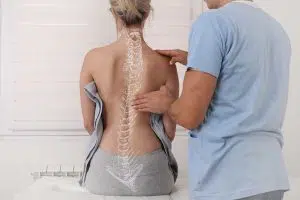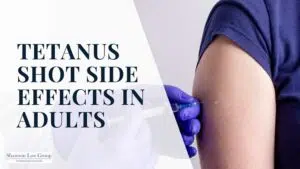
At Shannon Law Group, we represent people who have been hurt by the negligence of others. Our clients’ injuries vary widely, both in the types of trauma involved and how the injuries occur.
Over the years, spinal injuries have been one of the most common injuries our clients have dealt with are spinal injuries. Traumatic spine injuries run the gamut in terms of severity and affect on our clients’ daily lives.
Before we discuss the various types of spinal injuries, it is important to understand the basic components of the spine. The spinal cord runs vertically down the spinal canal. Other than the brain, the spinal cord is probably the most important part of your body’s nervous system.
The bones that run from the base of your skull all the way to your tailbone protect your spinal cord. These bones are called vertebrae.
The vertebrae are broken down into three major regions: cervical (neck), thoracic (upper-mid back), and lumbar (low back). Between each vertebra are discs, which act as shock absorbers and allow flexibility in the spine.
Here are 4 Types of Traumatic Spine Injuries That You Should Know:
#1: Vertebral Fractures
In high force impacts, the vertebrae protecting the spine can fracture. Like many broken bones, vertebrae are capable of healing on their own (if it’s not a complex fracture). When a bone heals, the fracture closes, and the bone is mended back together.
Despite what many insurance adjusters and defense counsel believe, a “healed” fracture does not equal a perfectly healed bone. We have had several clients that have had “healed” vertebral fractures. However, they continued to have pain and other symptoms all the way through trial and often years after the injury occurred.
#2: Facet Joint Syndrome
In our bodies, joints connect two or more bones and functions to promote motion. In your spine, the joints connecting each of your vertebrae are known as facet joints. Facet joints allow your back and neck to move forward and backward.
Facet joint syndrome causes significant pain in the spine. This condition often occurs due to degeneration associated with aging in the low back. As with most chronic orthopedic conditions, facet joint syndrome can also be aggravated by a traumatic event. When in the neck and mid/upper back, facet joint syndrome typically caused by some traumatic event like whiplash during a car accident.
#3: Herniated or Protruded Discs
When the spinal column undergoes sufficient force, the discs may herniate or protrude. Each disc contains a jelly-like center (nucleus) encased in a tougher exterior (annulus).
A significant traumatic force can cause tears in the annulus. When the annulus is torn, the jellylike nucleus can push out and put pressure on the spinal cord or the spinal nerves.
This pressure can cause an incredible amount of pain and other symptoms, including tingling, numbness, and more. These symptoms can affect the spine and also the area of the body that is innervated by that region of the spine. For example, a herniated disc in the lumbar spine can cause both regional pain in the low back and pain and other symptoms down into the legs.
Whether a disc qualifies as a protrusion or herniation depends on the amount the disc protrudes into the spinal column. These types of injury are often referred to as a bulging or slipped disc.
#4: Severed Spinal Cord and Paralysis
The most severe type of spine injury is a severed spinal cord. This type of injury is commonly called a complete spinal cord injury and its effects are catastrophic. Unfortunately, many people with spinal cord tears will never walk again. Depending on the level of the tear, some victims may also lose functional ability in the upper limbs as well.
Suffering from a spinal injury? We can help.
At our firm, we have handled all of the above types of injuries. In many cases, insurance companies and their attorneys will argue that the pain-producing spine injuries are a result of chronic degeneration – not any traumatic cause.
By the time we’re 30 years old, all of us have some degeneration in our bodies. Often we can have degeneration and not even realize it because we have no symptoms. Traumatic events can push an asymptomatic degenerative spinal condition into a condition that causes significant pain and other symptoms.
If you have injured your spine as a result of the negligence of others, contact us today to explore your legal options. Call us at (312) 578-9501 or fill out the form below to get started. Our consultations are always free.
Schedule Your Free Consultation Today



